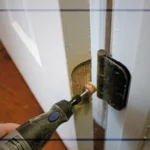How to Get Polyurethane Off Hands?
Polyurethane, a trusty companion in DIY projects, brings a glossy touch to creations. Yet, the challenge lies in parting ways with it from your hands.
So, how to get polyurethane off hands effectively? The answer ranges from a spectrum of solutions. Soap and water are for water-based poly, while mineral spirits are the best solution for oil-based polyurethane. Alternatives vary widely from peanut butter to hand cleaners.
Here, we’ll walk you through methods, both common and quirky. Whether it’s oil-based or water-based polyurethane, we’ve got you covered. So, join us in this journey to conquer the sticky situation of polyurethane removal and emerge with hands as clean as your finished projects.
How Polyurethane Forms and Sticks in Your Hands?
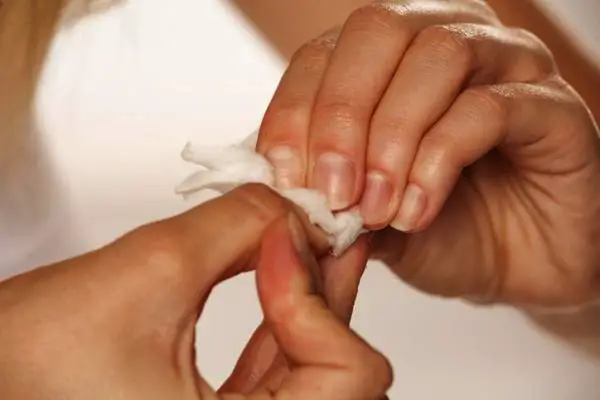
Polyurethane is a versatile and commonly used polymer that finds its applications in various industries. It is formed through a chemical reaction between diisocyanates and polyols, resulting in a material with diverse properties and uses.
- Properties of Polyurethane:
- Durability: Withstands wear and tear
- Flexibility: Used in clothing and footwear
- Strength: Resistant to mechanical stress
- Chemical Resistance: Holds up against certain substances
- Water Resistance: Performs well in wet environments
- Aesthetic Options: Can be molded and colored
How to Remove Water-Based Polyurethane Off Hands and Skin?
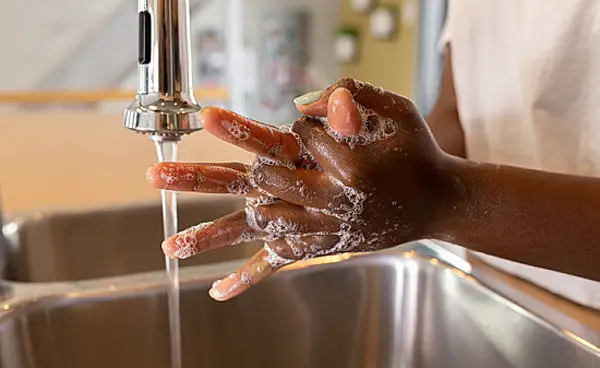
Water-based polyurethane can be easier to remove from the skin than oil-based versions. Follow the tips below to clean your hands effectively:
- Rinse Hands thoroughly and Immediately: When you notice the water-based polyurethane on your skin, rinse your hands under running water. Continue scrubbing if necessary.
- Apply Hand Soap: Apply a generous amount of hand soap to your wet hands. Choose a soap with good grease-cutting abilities.
- Gently Scrub Hands: Rub your hands together to create a lather, focusing on the areas with polyurethane. Use gentle scrubbing motions to help break down the polyurethane.
- Moisturize Your Hands: After cleaning, apply a moisturizing lotion to prevent your skin from drying out. Water-based polyurethane can strip natural oils from your skin. So, always be cautious and discontinue if you experience any irritation or discomfort.
How to Remove Oil-Based Polyurethane From Hands and Skin?

Removing oil-based polyurethane from your skin requires a different approach due to its adhesive nature. Follow these steps to clean your hands effectively:
- Step 1. Dampen a Cloth with Mineral Spirits: Moisten a clean cloth or paper towel with a small amount of mineral spirits. Make sure the fabric is damp, not soaking wet.
- Step 2. Gently Wipe Hands: Carefully wipe the affected areas of your hands with a damp cloth. Avoid rubbing vigorously, as this could irritate your skin.
- Step 3. Wash with Soap and Water: After using mineral spirits, wash your hands with soap and water to remove any remaining residue.
- Step 4. Apply Moisturizer: Oil-based polyurethane and mineral spirits can strip your skin of natural oils. So it’s important to rehydrate your hands with a moisturizer after cleaning.
How to Get Polyurethane off hands: 11 Alternative Methods
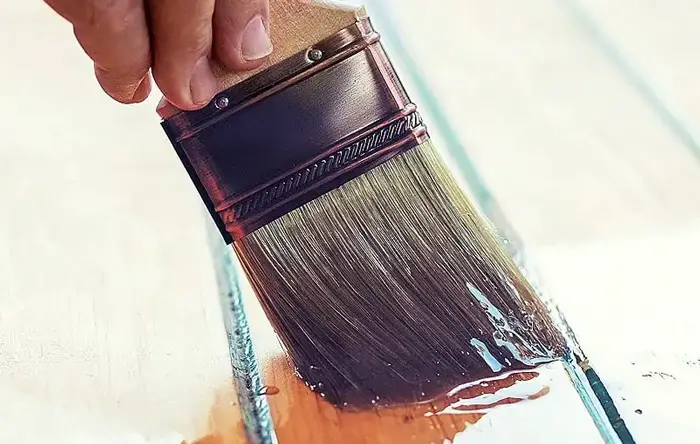
Here are 11 alternative approaches to consider for removing polyurethane from your hands:
1. Paint Thinner
Applying paint thinner to break down adhesive solid properties is particularly effective for oil-based polyurethane. And WD-40 is one of the most effective paint thinners.
Then, gently rub the affected areas before washing them with soap and water. Finally, consider moisturizing if your hand feels dry.
2. Baby Oil or Vegetable Oil
These oils are gentle and readily available and work well on fresh or dried water-based polyurethane. They help dissolve and lift the substance.
3. Olive Oil and Salt
Ideal for milder cases, this natural mixture serves as an exfoliant, breaking down polyurethane particles.
- Craft a paste using olive oil and salt to create an exfoliating solution.
- Rub the mixture onto your hands, aiding in breaking down the polyurethane.
4. Soy-based Stripper
It is a milder alternative to traditional strippers and effective for multiple polyurethane types. As it is bioactive, it is more skin-friendly. Still, you’ve to wash your hands after using this.
5. Alcohol
Effective on dried polyurethane, alcohol’s solvent properties dissolve and remove residue from the skin surface. So, dampen a cloth with isopropyl alcohol, rub gently on your hands, then wash thoroughly..
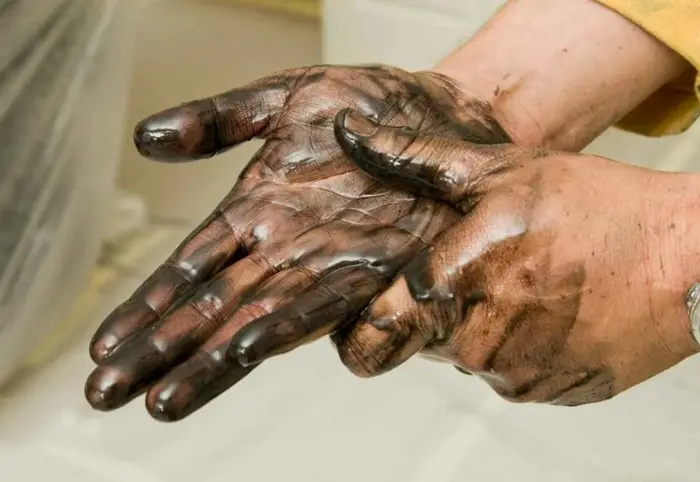
6. Nail Polish Cleaner/ Acetone
Acetone-based removers can effectively dissolve and erase polyurethane marks from small areas.
Target small areas with dried residue by using acetone-based nail polish remover. Rub gently, and wash your hands well.
Watch this video!
7. White Vinegar
Vinegar is chemically an ethanoic acid. Its acidic nature aids in breaking down polyurethane, making it an option for milder cases. Soak a cloth in white vinegar, gently rub your hands, and let the acidity help dissolve the polyurethane.
8. Hand Cleaner
These cleaners are helpful for poly when it is still wet. But it won’t work after it dries. Also, you’ve to wash your hands after using this option.
9. Peanut Butter
The natural oils in peanut butter loosen and remove polyurethane from the skin’s surface.
Apply a thin layer of peanut butter, rub gently, then wash your hands.
10. Lotion/Moisturizer
With a gentler approach, lotions and moisturizers assist in breaking down the residue while soothing the skin.
Coat your hands with a generous amount of lotion or moisturizer. Let it sit, then rub and wash your hands.
11. Warm Water
Finally, if poly is weakly adherent, warm water is enough to remove that. Soak your hands in warm, soapy water for an extended period. Gently scrub to help remove the polyurethane.
Safety Tips for Using and Removing Polyurethane
Polyurethane is a valuable material, but it’s essential to handle it safely, both during application and when removing it from your skin. Follow these safety tips to minimize risks:
- Ventilation: When working with polyurethane, ensure proper ventilation in your workspace to prevent inhaling fumes or vapors.
- Open doors and windows beforehand
- Switch on the fan
- Protective Gear: Wear appropriate personal protective equipment, such as gloves, safety glasses, and respirators, especially when dealing with solid solvents.
- Avoid Skin Contact: Prevent direct contact with polyurethane by wearing gloves. Isocyanate, a polyurethane component, is associated with developing asthma and skin issues.
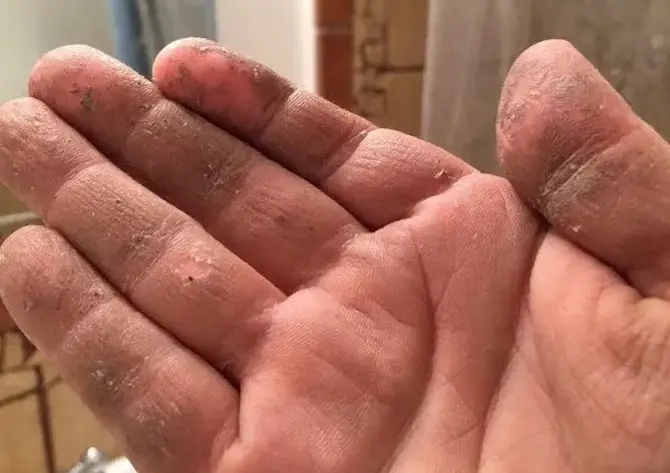
So, if it comes into contact with your skin, remove it promptly using the methods described earlier.
- Read Labels: Always follow the instructions and warnings on product labels. Different polyurethane formulations may require specific handling.
- Test in Small Areas: Before using alternative methods to remove polyurethane from your skin, test them on a small patch to ensure you don’t have an adverse reaction.
- Wash Hands Promptly: If polyurethane gets on your skin, wash it off as soon as possible using suitable methods.
- Discontinue Use: If you experience skin irritation, redness, or discomfort while using any removal method, discontinue use immediately and seek medical advice if necessary.
- Medical Attention: If you accidentally ingest polyurethane, inhale its fumes excessively, or encounter severe skin reactions, seek medical attention promptly.
- Dispose Properly: Dispose of used clothes, paper towels, and materials properly, following local regulations for hazardous waste disposal.
- Storage: Store polyurethane products and solvents in their original containers, tightly sealed and out of reach of children and pets.
FAQs
Now, let us discuss some lingering questions about polyurethane removal from hands and skin surfaces.
Q: How to remove fresh polyurethane?
To remove fresh polyurethane from your skin, follow these steps:
- Immediately wipe off excess polyurethane with a clean cloth or paper towel.
- Wash your hands with soap and water, and gently scrubbings to remove as much polyurethane as possible.
- If needed, use an alternative removal method like baby oil, vegetable oil, or a commercial polyurethane remover.
Q: What removes dried polyurethane?
Removing dried polyurethane can be more challenging, but you can try these methods:
- Gently scrape off any loose flakes of dried polyurethane using a plastic scraper or your fingernail.
- Soak your hands in warm, soapy water to soften the dried polyurethane.
Use an alternative method, such as mineral spirits, paint thinner, or oil-based solutions, to help dissolve and loosen the dried polyurethane.
Q: Is polyurethane toxic on the skin?
Polyurethane can irritate the skin, especially in its uncured or liquid state. It may cause dryness, redness, or itching. While it’s generally not highly toxic, prolonged or repeated exposure to polyurethane can lead to more severe skin reactions.
Final Words
Finally, understanding safe methods to remove polyurethane from your skin is vital. Whether dealing with water-based or oil-based varieties, a range of options, from everyday household items to specialized solvents, are available.
Prioritize safety, follow guidelines, and test methods cautiously. By following these steps, you can effectively remove polyurethane residue while safeguarding your skin and well-being.


